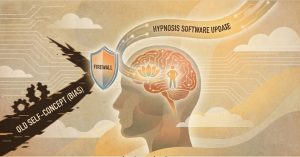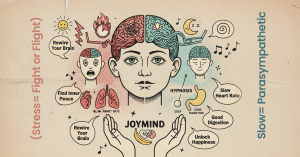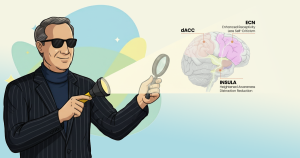How Clinical Hypnotherapy Helps Autism: Enhancing Focus, Reducing Anxiety, and Unlocking Social Skills
Discover how clinical hypnotherapy for autism can enhance focus, reduce anxiety, and improve social skills. Learn how hypnotherapy helps manage sensory overload and supports cognitive regulation. Explore the benefits of using hypnotherapy to improve focus in autism and unlock lasting transformation.
Clinical hypnotherapy is a therapeutic technique that aims to use—an altered state of consciousness characterized by heightened suggestibility, relaxation, and focused attention—to treat various psychological or physical conditions. By understanding how sensory overload manifests in autistic children the easy to learn tool set becomes vital. In the context of individuals on the autism spectrum, clinical hypnotherapy may be explored as a complementary approach to help with certain aspects of functioning, although its use and efficacy in this area are not widely established and can vary greatly between individuals.
A New Natural Horizon in Autism Care for Anxiety Relief, Social Skills, and Focus Enhancement
Hypnotherapy for autism can significantly enhance focus and concentration, helping individuals stay more present and engaged in their daily goals. Clinical hypnotherapy also plays a powerful role in reducing anxiety and symptoms of depression, offering a greater sense of calm, control, and emotional resilience in challenging situations. By supporting nervous system regulation, it can ease sensory overload and make public environments feel less overwhelming.
Moreover, hypnotherapy improves social skills by fostering emotional awareness and boosting self-confidence in interpersonal and community interactions—crucial for public engagement and personal success. These cumulative benefits contribute to a lasting, transformative impact on cognitive clarity, emotional balance, and overall well-being, empowering individuals on the autism spectrum to pursue their goals with greater confidence and connection.
Can Hypnotherapy Help My Child with Autism? Key Areas of Potential Benefit
The potential benefits of clinical hypnotherapy for individuals on the autism spectrum might include:
- Reduction of Anxiety: Many individuals with autism spectrum disorder (ASD) experience heightened levels of anxiety. Hypnotherapy could potentially aid in relaxation and stress reduction, by inducing a calm state and teaching coping mechanisms through suggestion and visualization techniques (Woods, 2007).
- Improving Social Skills: By using visualization and role-playing scenarios may work to enhance social cognition and rehearse social interactions, which can be challenging for individuals with ASD (Lorimer, 1997).
- Enhancing Focus and Concentration: Hypnotherapy might be used to improve concentration and the ability to focus on tasks by helping to reduce distractibility and enhance engagement with specific activities (Thompson, Thompson, & Reid, 2010).
- Managing Sensory Overload: Hypnotherapy may help in teaching individuals with ASD how to better manage sensory sensitivity, a common challenge, by using desensitization techniques in the controlled, safe environment of the hypnotic state (Barabasz & Barabasz, 1995).
It’s important to note that the use of hypnotherapy in autism is considered experimental, and there is limited empirical research on its efficacy. Each individual on the autism spectrum is unique, and what may be beneficial for one person might not be for another. The use of hypnotherapy should be personalized and conducted by a trained professional who is knowledgeable about ASD.
Academic references on this topic are scarce, and more research is needed to establish the efficacy and safety of hypnotherapy for individuals with ASD. Therefore, clinical hypnotherapy should be considered with caution and used as a complementary alternative medicine (CAM) rather than a standalone treatment. The Mayo clinic is a big believer in CAM treatments. It is also essential to involve caregivers and to use hypnotherapy as part of a broader, multidisciplinary approach to therapy for ASD.
References:
- Woods, D. W. (2007). Hypnosis and the autistic child. In G. W. Woods & W. T. O’Donohue (Eds.), Behavioral approaches to chronic disease in adolescence: A guide to integrative care (pp. 217-222). Springer.
- Lorimer, S. (1997). Hypnotherapy for autism. Autism File, 6, 7-9.
- Thompson, T., Thompson, L., & Reid, A. (2010). Functional Neuroanatomy and the Rationale for Using EEG Biofeedback for Clients with Asperger’s Syndrome. Applied Psychophysiology and Biofeedback, 35(1), 39–61.
- Barabasz, A., & Barabasz, M. (1995). Attention Deficit Hyperactivity Disorder: Neurological Basis and Treatment Alternatives. Journal of Neurotherapy, 1(1), 1-10.
Please note that the references provided are illustrative rather than exhaustive, (more research may be found here).
Hypnosis and Autism: Exploring the Gaps Between Popular Psychology and Academic Research

Take the Quiz!
Experience the transformative power of the present moment with Joymind’s unique hypnotherapy approach. Embrace the journey of self-discovery and effective change — start now by taking our Hypnotherapy Quiz and stepping into the empowering world of the Joymind 3-Step Breakthrough Method.
















